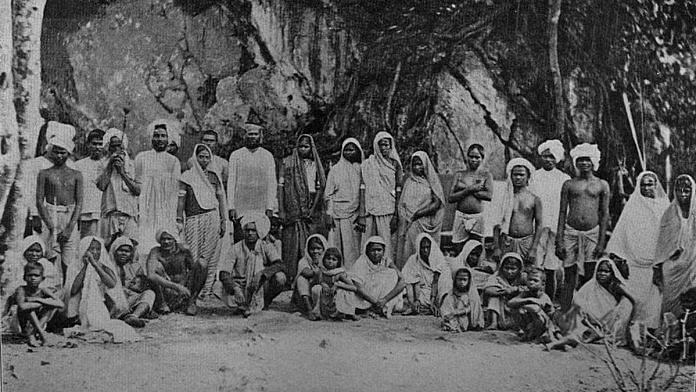New Delhi: Leading American daily The New York Times received flak Saturday for its reportage on recent developments in the South American country of Guyana.
In a report titled, ‘Crisis Deepens in Tiny Guyana, the World’s ewest Petro State’, the news outlet used the term ‘descendants of Indian farmhands’ to describe those who primarily constitute the support base of Guyana’s opposition party.
“President David Granger is supported primarily by Guyanese of African descent, while the opposition is backed by the descendants of Indian farmhands,” the NYT said.
However, Guyanese-American author Gaiutra Bahadur pointed out on Twitter that the historically accepted term is ‘indentured labourers’ or ‘coolies’, and called out NYT for getting its “basics so wrong”.
Descendants of Indian farmhands, @nytimes? They were plantation laborers in a system described in the canonical histories as “a new form of slavery.” How can we trust your coverage of such a complex political landscape if you get the basics so wrong? https://t.co/kOVJ5p9KIF
— Gaiutra Bahadur (@gbahadur) March 7, 2020
Other users also joined her in criticising the American media outlet.
Thanks for calling this out. So much of our history & life is erased due to willful ignorance.
Guyana’s oil is COMPLICATED and who is the NYT to speculate on what’s best for a county whose history it can’t even get right?
— Rhea Singh (@itsrheasingh) March 7, 2020
The report was describing the political and social landscape of Guyana, and the possible wave of clashes between pro- and anti-government groups, in the backdrop of the country’s electoral authorities announcing that the ruling party had won the most votes in the 2 March elections.
Also read: ‘Populist, more symbolism than substance’: How global media described Trump’s India Day One
History of indentured labour in Guyana
Bahadur is the author of the book Coolie Woman: The Odyssey of Indenture, which chronicles the exploitation faced by her great-grandmother, who worked as an indentured labourer or ‘coolie’ in British Guyana.
Indentured labour has widely been condemned as a form of slavery during the colonial era, when farmers from countries like India and China were taken to Africa and South America and made to perform labour at low or subsistence wages. ‘Coolie’ was used as a pejorative to describe such workers, whose ‘trade’ began around the 1840s due to the shortage of labourers triggered by the worldwide movement to abolish slavery.
Although outlawed by the Universal Declaration of Human Rights adopted by the UN General Assembly in 1948, indentured labour resulted in a huge Indian diaspora, whose subsequent generations are what the NYT article refers to as ‘descendants of Indian farmhands’.
India and Guyana’s cricketing connection
Guyana, owing to its British connection, is the only country on the South American mainland that has a cricketing culture. Guyanese players have been part of the West Indies cricket setup right from the 1920s, when the team started playing the game internationally.
Arguably the most iconic Guyanese cricketer is Clive Lloyd, who led the West Indies during their most successful era in the 1970s and 1980s. He captained them to two World Cup victories in 1975 and 1979, and lost to Kapil Dev’s India in 1983. He was knighted in 2019.
Another former West Indies captain from Guyana is Carl Hooper, the celebrated batsman of the 1980s and 1990s. Hooper grew up alongside Indian-origin Guyanese people, and has expressed his love for India as “another cricket-mad nation”.
“In Guyana, 65-70 per cent of the population is Indian. We celebrated all Indian festivities like Diwali. I was very familiar with the culture,” Hooper had said in an interview to Sportstar in 2018.
Four Indian-origin Guyanese players have also captained the West Indies — Rohan Kanhai, Alvin Kallicharan, Shivnarine Chanderpaul and Ramnaresh Sarwan.
Kanhai, who played for the West Indies from the late 1950s to the mid-1970s, was also part of the 1975 World Cup-winning team. India’s legendary opening batsman and former captain Sunil Gavaskar was such a fan of Kanhai’s skills that he named his son Rohan Gavaskar after him, saying: “To say that he is the greatest batsman I have ever seen so far is to put it mildly.”
Also read: Ahead of 2+2 talks, 3 major US dailies put India’s anti-CAA protests on front page



